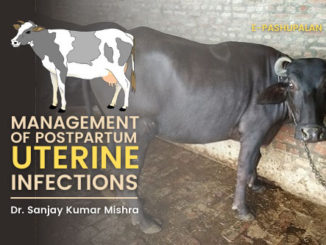Abstract
We, almost all are more or less familiar with the disease rabies and realize it’s important as is direct Zoonotic disease means it can be transmitted to the human through a vertebrate host. The aim of the study is to provide guidance and data, to increase more awareness among animal owners and other people. And also these findings provide pieces of information like why rabies should be eliminated and if it can be eliminated or prevented then how we should prevent the disease as it is a global risk to us.
keywords: dog-mediated rabies, elimination, WHO, APCRI, immunization, OIE
Introduction
“Rabies” the origin of the word is either from the Sanskrit word ‘rabhas‘ which means to do violence or the Latin word ‘rabere‘ that means to rage. And the ancient Greeks called it “Lyssa“. The genus comes from Lyssa. Rabies is a well-known killer disease of human and animals which spreads worldwide (maximum burden of human rabies in Asia and Africa) although it has been eliminated from western Europe, Canada, the USA & Japan. Here the subject of the conference is to eliminate rabies in India by 2030.
A brief discussion on Rabies virus
Rabies is an ancient disease caused by Lyssavirus under the family Rhabdoviridae. Not only public health importance but also it has an economic effect on livestock which is not properly noticed.
In the case of the dog as well as other animals, it is called rabies and in humans, the disease is called ‘hydrophobia’. The disease occurs in two forms. In the dog, the furious form which is characterized by change of temperament, chewing of inedible objects, tendency to attack the people randomly, and paralytic of dumb form is characterized by paralysis of jaw muscle, hypersalivation, and seizure. In the case of humans, it is featured by hypersalivation, confusion, fear of drinking water, agitation, hyperactivity, and encephalitis as the predilection site of the virus is the brain and spinal cord.
It is diagnosed by the gold standard test FAT ( fluorescence agglutination test). It is recommended by WHO and OIE both. It is done by preparing smear to confirm the presence of rabies antigen.

Condition of rabies in India
The disease is endemic in all states of India except Andaman, Nicobar, and Lakshadweep. But nowadays the situation is noticeable. About 18000 to 20000 cases of rabies a year and about 36% of the world’s deaths have been reported in India. More tha955 of human cases are dog-mediated and among them 60% of victims are children. Earlier, rabies is not considered as a major disease due to lack of awareness among the people of our country, and also the cold chain of the vaccine was not maintained,. There is an absence of an organized surveillance system of human or animal cases and a lack of laboratory facilities for diagnosis. Now, it is time for India to move towards rabies elimination by 2030.
Elimination/prevention of rabies
Firstly, to prevent anything, the source of that particular thing should be eliminated first. So The elimination of human rabies is able to be maintained at a certain level if rabies is controlled at the source it means dog as the dog comes in contact with the human easily.
For elimination purpose, WHO along with FAO of the United Nations, World Organization for the Animal(OIE), Global Alliance for Rabies Control, and APCRI (Association for prevention & control of rabies in India) come up together to achieve the goal of zero human death from rabies by 2030.
To accomplish this achievement rabies should be controlled and it is controlled by various means-
- Through pre bite vaccination– in humans, the shot is given on 0,7,28 days and annually and in the dog, the dose is followed at the age of 3months, next booster, and then annually.
- Through post-bite prophylaxis– 1. Wound management ( bite site is washed under running tap water or application of tincture iodine on that site.
Passive immunization (RIG): rabies immunoglobulin is used together with the rabies vaccine. It is given that person who has been exposed to the animal that has the possibility to have rabies. It is given only those people who has never received the rabies vaccine before.
Active immunization(ARV): it is given on o day, 7, 14, 28, and 90th days. 90th dose is not given to those persons who have already received RIG. THE same ARV schedule is followed when one dog bites or scratches another dog.
- Control of dog population: it is done by ovary hysterectomy of the stray dogs.
- By maintaining the cold chain of vaccines and organizing vaccination camp for street dogs. This is a multidisciplinary approach and different administration level involvement is needed. Like central/ local government or NGO or civic society.
- By increasing awareness among people by organizing different awareness programs.
Conclusion
India is a country of huge population. So it is a little bit hard but not impossible to resist dog-mediated rabies completely. And through this holistic approach, which is taken by WHO and other organizations by application of all those previously mentioned means, elimination of rabies may be possible. The veterinary sector of India plays a vital role to control the disease so that fear of rabies among the public can be changed. Thus, a rabies-free country can be created in 2030.
References
- The Merck Veterinary Manual, 11th edition
- www.who.int
- Rabies- Wikipedia






Fantastic. Ashadharon. Mind blowing